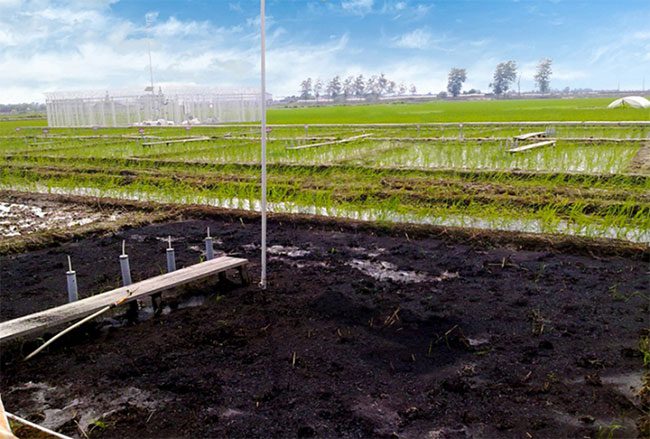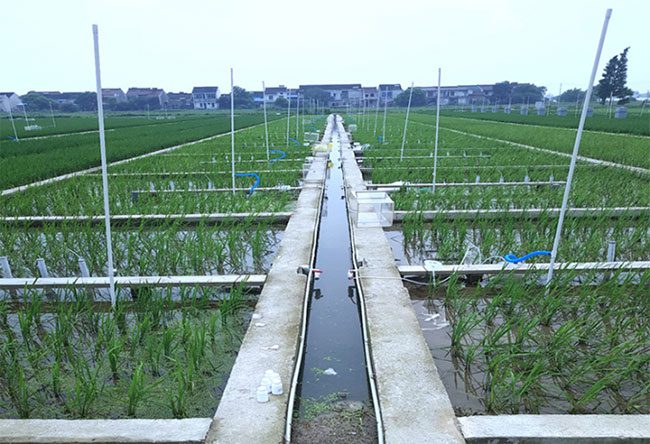China is collaborating with researchers from the United States and Germany to develop a production system aimed at reducing carbon emissions in agriculture.
According to an assessment from the Nanjing Institute of Soil Science, part of the Chinese Academy of Sciences (CAS), the total carbon emissions from the production of major staple crops in China, including rice, wheat, and corn, reached 666.5 million tons in 2018.
After completing a comprehensive life cycle assessment of staple crops, the research team indicated that an integrated biomass power generation and pyrolysis system, along with traditional methane and nitrogen emission reduction measures currently applied, could help neutralize greenhouse gas emissions in agriculture.

Rice straw being converted to biochar in field trials. (Photo: Zhao Xu).
Specifically, traditional emission isolation and reduction measures such as increasing the return rate of straw to the fields, optimizing nitrogen fertilizer management, and implementing intermittent irrigation in rice paddies could reduce the total carbon emissions from staple crop production from 666.5 million tons to 560 million tons. By continuing to carbonize straw into biochar and returning it to the fields, total carbon emissions would further decrease from 560 million tons to 230 million tons, achieving a reduction rate of about 66%.
Based on this, the research team designed an innovative energy harvesting system to refine bio-oil and biogas during the biochar production process to generate electricity as an alternative energy source and reduce emissions. Through the operation of this system, carbon emissions from the production of staple crops in China (230 million tons) could be converted into carbon sinks (-40 million tons), achieving carbon neutrality.

Experimental rice field applying biochar. (Photo: Zhao Xu).
“This new solution could help China achieve carbon neutrality in food production without reducing food output. It also prevents atmospheric pollution, increases the utilization rate of fertilizer resources, and boosts economic and environmental benefits by over 30%,” said Yan Xiaoyuan, a leading scientist at the Nanjing Institute of Soil Science.
The research, led by CAS in collaboration with China Agricultural University, Tsinghua University, and Cornell University, was published online in the journal Nature Food in February 2023.


















































